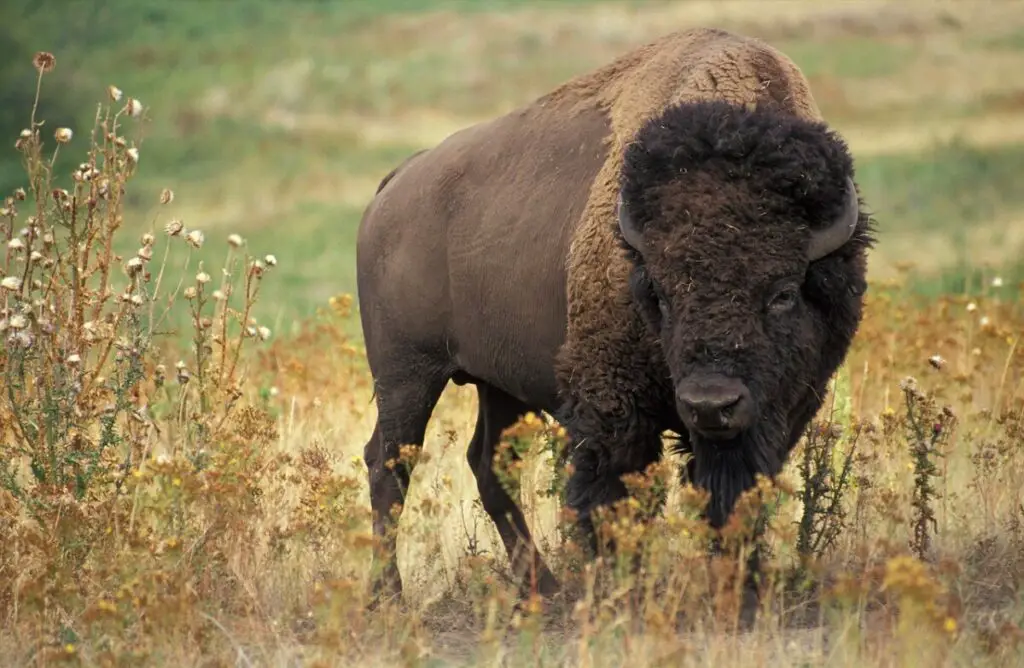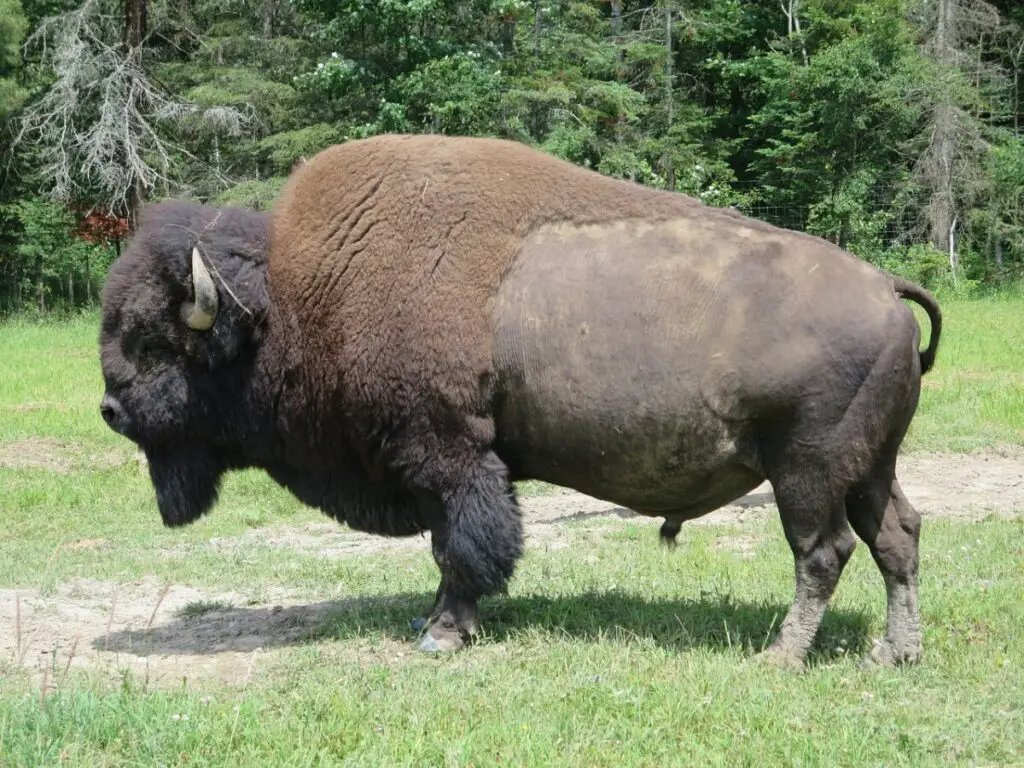The American Bison, also known as the Buffalo, is one of North America’s most iconic wildlife species. Not only have they been a part of North American history for centuries, but their long-standing presence has shaped and continues to shape the continent’s ecology and environment.
From diet to behavior, this article will explore some key aspects about bison that make them unique in comparison to other wild animals.
Furthermore, it will look at how human activities such as hunting and habitat loss continue to affect bison populations today. Despite the challenges these impressive creatures face, several conservation efforts are being implemented by various organizations which aim to maintain healthy bison numbers on the continent going forward.
There are two species of bison: the American bison (Bison bison) and the European bison (Bison bonasus), also known as wisent. Both species are members of the Bovidae family and are large, herbivorous mammals that are closely related to cattle.
The American bison is native to North America, while the European bison is found in parts of Europe and Asia. Both species have a distinctive hump on their shoulders and a shaggy mane of hair on their head, neck, and shoulders.
By exploring the biology, behavior and conservation status of this remarkable animal species, readers can gain an understanding of why we should strive for its continued survival into the future.

Evolution Of The Bison
The evolution of bison is a topic that has been extensively discussed by scientists and researchers. Bison have roamed the North American continent for hundreds of thousands of years, with some fossil evidence indicating their presence even further back in time.
From these early beginnings, the species gradually evolved to become what we recognize today as the powerful herbivore found on the plains and grasslands of western North America.
In order to understand how this animal changed over time, it is important to look at its physical characteristics. The modern-day bison stands taller than other large mammals such as elk or deer, reaching heights between five and six feet when standing on all fours.
Its body shape is relatively stocky compared to most ungulates, with broad shoulders tapering down into a more slender midsection and legs. This gives them an impressive amount of strength while also allowing them to move swiftly through open terrain.
Additionally, they possess horns which are short but wide, providing protection from predators while browsing vegetation.
Although much can be said about the appearance of bison, there is still much research needed regarding their behavior and social structure within herds.
For instance, recent studies suggest that adult males exhibit dominance hierarchies based upon age and size whereas females may form protective units during calving season in order to better protect their young from threats.
As our understanding grows in regards to these animals’ habits and behaviors, so too does our appreciation for the long evolutionary process that shaped them into the remarkable creatures they are today.
Bison Habitat And Migration Patterns
The American Bison, commonly referred to as the Buffalo, is believed to have originated in North America. In order to understand their current habitat and migration patterns, it is important to consider the evolution of this species.
Bison are now found primarily on private ranches or public lands throughout North America, Europe and Asia. They inhabit a wide range of habitats including grasslands, shrub-lands, woodlands and mountain regions.
Although some bison may remain relatively stationary for extended periods due to food supplies and protection from predators in certain areas, many migrate seasonally between summer grazing grounds at higher elevations and winter ranges closer to lower elevations. Seasonal migrations can be quite lengthy; one population in Yellowstone National Park travels over 200 miles round trip annually.
This long distance travel provides access to necessary resources such as water sources, minerals and green vegetation while avoiding deep snow accumulations that would interfere with movement or cause injury.
In addition to seasonal movements within established territories, bison also migrate away from unfavorable conditions such as drought or overcrowded pastures resulting in shorter term changes in location which can vary greatly depending upon individual populations.
Migration behavior appears strongly influenced by social dynamics where smaller groups often join larger herds when migrating towards new territory or separating again once they reach more suitable conditions elsewhere.
Thus these animals demonstrate strong adaptation skills enabling them to thrive despite changing environmental conditions both historically and into modern times.
Bison As A Keystone Species
Bison are considered a keystone species, meaning they have an outsized role in their environment. They play an important part in maintaining the structure of grassland and prairie ecosystems.
Bison grazing provides space for other plant species to grow, while also stimulating new growth of existing plants. This helps promote biodiversity in the area, as well as providing food sources for a variety of animals such as birds, rodents, and insects.
The presence of bison also affects soil composition by helping reduce erosion from wind and water. Their large hooves help break down hard-packed ground which allows water to penetrate more deeply and rehydrate dry soils.
Additionally, when bison consume grasses or trees, it can create nutrient-rich areas where new vegetation can regrow quickly. The result is that these regions become increasingly diverse over time due to this cycle of renewal.
By influencing the ecosystem in numerous ways, bison have been found to be essential components of many landscapes across North America and beyond. In addition to improving the habitat quality for other organisms, bison also provide economic benefits through activities such as hunting tourism and recreational use on public lands.
As one of the continent’s most iconic mammals, understanding how bison interact with their environment has never been more important than now.
Bison’s Predators Revealed: Unveiling the Threats
Bison Hunting And Conservation
Bison hunting and conservation have been a source of debate for many years. The bison, an iconic species in American history, is seen by some as an integral part of the culture and others view it as a vital wildlife resource that needs to be managed responsibly.
Bison are also considered by some to be a keystone species that plays an important role in maintaining healthy ecosystems. Consequently, there has been much discussion surrounding how best to manage bison populations so they can continue to provide environmental benefits while still allowing humans access to this animal for subsistence or recreational purposes.
The primary management tool used by states and federal agencies when dealing with bison herds is regulated hunting. This practice allows people to harvest individual animals from the herd while keeping overall numbers at sustainable levels.
It can also help prevent overpopulation which can lead to negative impacts on vegetation and other wildlife in the area. Hunting may also be used as a way to reduce disease among wild herds if necessary, although this type of measure is rarely taken due its potential ethical implications.
Additionally, governments often use hunting fees as a form of revenue generation which helps fund conservation efforts such as habitat restoration projects or research into new technologies aimed at improving bison management practices.
In recent years, the focus on conserving the remaining bison population has grown significantly due to their rapid decline since European settlement began in North America several centuries ago.
Organizations such as The Nature Conservancy have worked hard to restore large tracts of land suitable for these majestic creatures and create programs aimed at educating people about their importance both culturally and ecologically.
While more work remains ahead before full recovery is possible, steady progress has been made towards preserving this important species for future generations to appreciate and enjoy.
Bison In Popular Culture
Bison have been a significant creature in popular culture for centuries. This is due to their vast size and powerful presence, as well as the ability of bison to survive changes in environment over time. As such, they have inspired various symbols, stories, images and characters throughout history.
From ancient tribes like the Sioux and Crow who revered the animal with spiritual significance, to present day artworks depicting its strength and perseverance – bison has made an indelible mark on both Indigenous cultures and public understanding of this species. Furthermore, the use of its likeness can be found in everything from corporate logos (such as Buffalo Wild Wings) to classic films like Dances With Wolves.
Interestingly enough, there are also several books that feature bisons either directly or indirectly: Black Elk Speaks by John G Neihardt which recounts Native American life prior to European contact; The Yearling by Marjorie Kinnan Rawlings which follows a 12 year old boy during the Great Depression; Ishi in Two Worlds by Theodora Kroeber which tells the story of last living member of Yahi tribe; and others such as Where the Red Fern Grows by Wilson Rawls; White Fang by Jack London; Little House on Prairie by Laura Ingalls Wilder; Mr Popper’s Penguins by Richard & Florence Atwater; etc.
All these works reflect how humans interact with wildlife while raising questions about our place within nature’s cycle of life and death. Clearly, bison remain an integral part of cultural dialogue around our relationship with nature today.

Diseases And Predators Affecting Bison
Bison have a variety of diseases that can affect their health. These include brucellosis, bovine tuberculosis, and anaplasmosis. Brucellosis is an infectious bacterial disease which can cause abortions in pregnant cows, reduced milk production, infertility, and lameness in calves.
Bovine tuberculosis is caused by the bacterium Mycobacterium bovis and can be spread from cow to cow or through contact with infected wild animals such as deer and elk. It causes decreased appetite, loss of weight, coughing, fever, and difficulty breathing.
Anaplasmosis is a parasitic infection that affects the red blood cells of cattle leading to decreased appetite and weight loss due to anemia.
In addition to these diseases, bison also face predation from other mammals such as wolves, coyotes, bears, cougars and badgers. Wolves are one of the most significant predators for adult bison since they hunt in packs making them capable of killing even healthy adults.
Coyotes mainly target young calves while bears typically attack weak or sickly animals or scavenge on carcasses left behind by other predators. Cougars primarily feed on young calves but may occasionally take down larger prey when necessary while badgers mostly consume small rodents like mice but will opportunistically prey upon weakened or vulnerable individuals if given the chance.
Bison As A Source Of Food And Medicine
Bison have long been used by humans as a source of food and medicine. They were an important part of the traditional diet for many Indigenous North American peoples, providing essential nutrients such as protein, fat, vitamins, minerals and other micronutrients. Bison meat is also high in iron and zinc compared to beef, making it a valuable dietary resource.
In addition to their nutritional value, bison also provided medicinal benefits to Native Americans. Traditional healers used various parts of the animal including its bones, organs and hide to treat a variety of ailments ranging from fever to sore throat. The hides were sometimes carved into masks or worn as clothing while other body parts could be utilized in religious ceremonies.
The use of bison as both nutrition and medicine has continued throughout history up to present day with more modern methods being developed such as grinding down bone marrow for consumption or using extracts from organs for therapeutic purposes. As bison populations grow larger due to conservation efforts, these animals may continue to play an important role in human diets around the world.
